GermanyMapMarch 13–25, 2007 For some reason the airplane carrying “CeBIT” expo participants went from Moscow to Hamburg, although the expo was in Hanover. The bus ride to Hanover takes just as long as the flight from Moscow. That’s why I rented a car — at least that way I can smoke. By the way, the whole airport is awash with “Sixt” ads revolving around all kinds of cops from all different countries. The Russian road police are also represented, although for some reason the cop is sporting an OMON riot police patch. 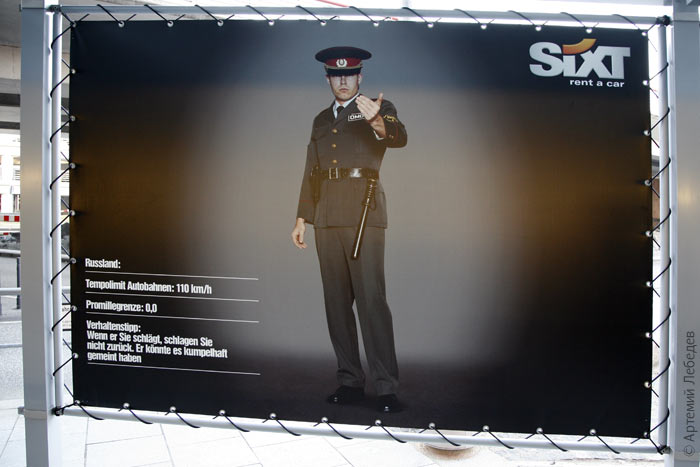 The Mercedes E-class we rented made a mockery of my habits. There are two gauges on the dashboard, right and left, the fuel gauge and the temperature gauge. Glowing bright white stripes denote absence, whereas the black ones mean presence. Here’s the rub: the brightness speaks to you more than the vertical positioning, so correctly answering the question of how hot your engine is (still cold or about to explode) takes a whole second and a half, instead of 200 milliseconds. I never got used to it, not even by the end of the trip. 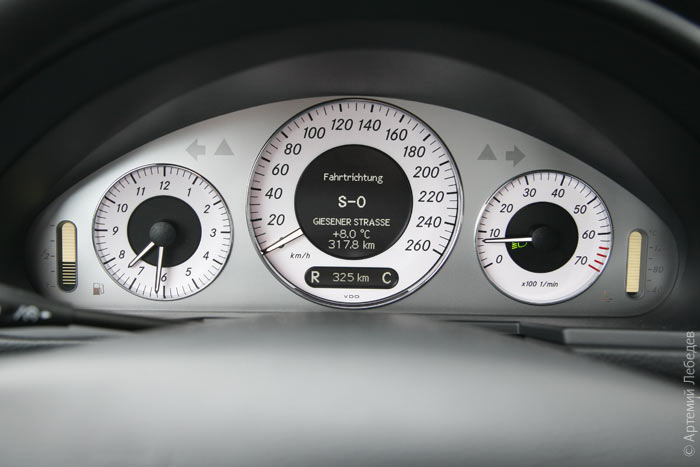 The second awful thing about this car is its navigation system — the tossers who made it skimped on the screen. It’s so small that it can’t fit the map in its entirety, so the only really visible bit is an arrow, which constantly changes its appearance. This I can get over. However, the fact that every single new itinerary must be entered into the system letter by letter using a D-pad (no touchscreen to speak of!), starting with the town you’re heading to — what bollocks. The onscreen letters are spread across three rows, so you select one, click, click, click, then another, click, click, click, then you go down a row, click, click, click, click — it makes you want to throttle someone. But the horrors don’t end there — there’s also the phraseology of the navigation system’s voice commands. Where a normal system would say: “In five hundred metres turn right”, the Mercedes Jane Doe says: “Turn right in five hundred metres”. This means that the driver’s first reflex is to lurch towards the first right turn they see; only two seconds later does he realise that he still has ample time to execute the movement. The only thing that I didn’t manage to learn to do over the course of the two weeks is to reset the time. The clock was running an hour behind and it was absolutely impossible to get the hands to budge. When we switched to summer time the hand shifted an hour forward all on its own, and yet the clock was still an hour behind. I pressed all the buttons, pulled, pushed, and twiddled everything in sight this way and that. The mystery remains unsolved. The only thing the German version of the manual said about the clock was: “this is a clock”. HanoverMapIt goes without saying that the purpose of our trip was the expo where we showcased our keyboards and various other objects. I spent five days manning our “CeBIT” stand, never getting a chance to see the city. 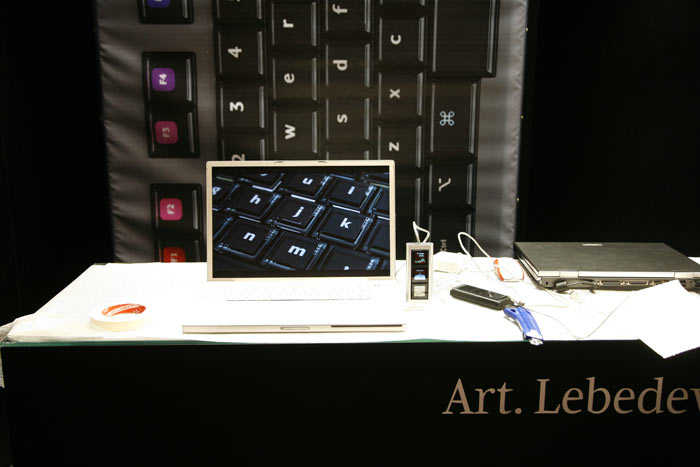 Our neighbours were green with envy because we had crowds three-deep, despite having the smallest category of stand available. During a fag break I met a South Korean guy who works for a button cell producer. We got talking and I showed him my North Korea photos. He oohed and aahed, then called over his colleagues from neighbouring stands. They all ran up and started looking at the photos, oohing, aahing, and expressing concern about their fellow Koreans. Then they started taking photographs with me — to show the folks back home a real live person who’d visited the DPRK. I wandered around the expo looking for suppliers, taking a look at Russia’s stands while I was at it. This year Russia was a “partner country” of sorts. There were only five companies who actually produce anything and they all had their own stands. The remaining hundred were grouped together in two different pavilions under the auspices of various ministries. Comrades, it goes without saying that is a total clusterfuck. Each cluster is the size of a football stadium. There’s not a soul in sight. Bored dudes stand around surrounded by booklets promoting the town of Obninsk and a light box with a sign saying “Novosibirsk region” next to them. You can smell the tedium from a kilometre away. The expo went tremendously well for us, but I didn’t stay until the very end, deciding to go road tripping around Germany instead — nothing much happens during the last two days anyway. In Germany there are cameras on all of the traffic lights: if you run a red light, you will be photographed, that way they can screw you over later. 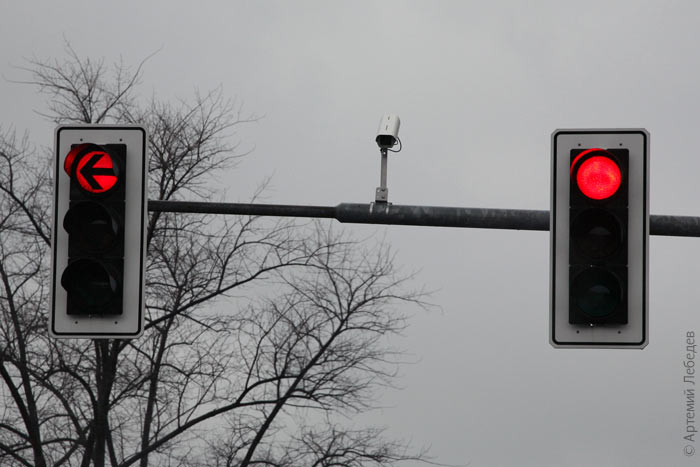 It turns out this isn’t a pleasant place to drive around. The road can become one-way for a bit without the slightest warning. What the lane you’re driving in is for constantly changes — in some parts it’s for turning left, in others for driving straight ahead. What’s more is, there are no signs indicating the direction of traffic above the road like there are in Russia. Instead they have arrows painted on the road, which you only ever notice at the eleventh hour. The Autobahn is not magic. Yes, it’s nice that there is no speed limit on some stretches (it’s perfectly legal to drive two hundred), but the lanes are so narrow that you fear scraping the sides of your vehicle in the flow of traffic. MainzMapQuiet, small, and provincial. One and a half old streets, as befits such a town. In the centre the houses are interspersed with veggie gardens.  I spotted some old German telephone boxes. The new ones are nasty, open and cold, whereas these ones remind of you something your neighbour could’ve welded together out of pieces of written-off buses — unprepossessing, but cosy (for instance, cf. Biysk). 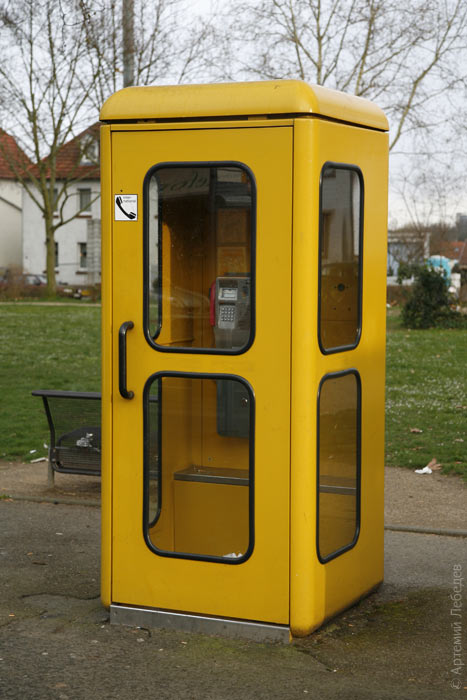 No idling at red lights. 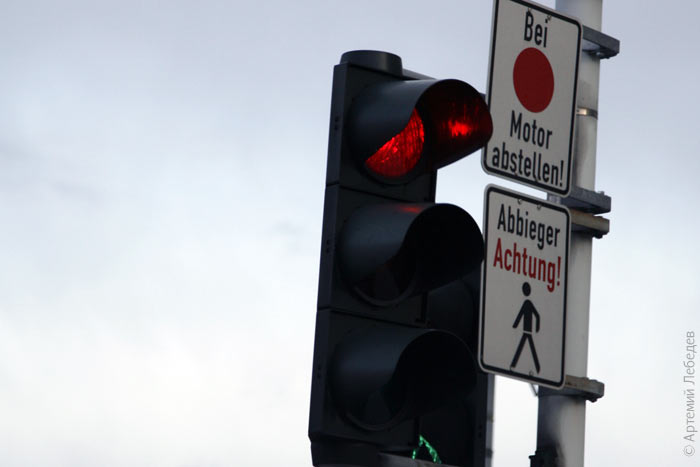 When in Mainz, visit the Gutenberg museum and then push along. An alarm was blaring inside the museum for a good ten minutes, no less. The museum attendants didn’t pay it the least bit of attention. The first fully-fledged book printed using movable metal type — the 42-line bible, is on display here. The room where the bible is held resembles a safe — fifty centimetres thick walls, black upholstery, and very dim lighting. The glass on the display cases containing the first and second editions is inlaid with metal strips every few centimetres. This is clearly to prevent people from cutting out a circle in the glass and ripping out a page to take home as a memento. 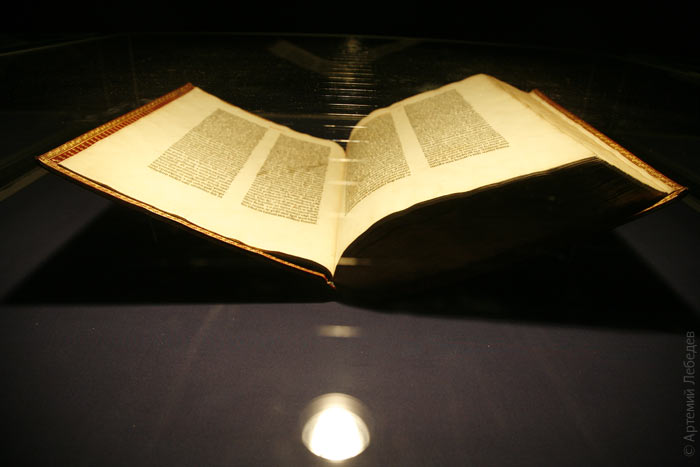 The bible turned out to be one and half times larger than I’d imagined. Roughly the size of a fully spread out “Kommersant” broadsheet. The margins of all of the books lying open in the museum, including the 42- line bible, are pressed down with clear ribbons that look like plastic bra straps. WiesbadenMapI want to pick every other street as the place where I’ll live out the rest of my days. The concentration of pretty houses is staggering. 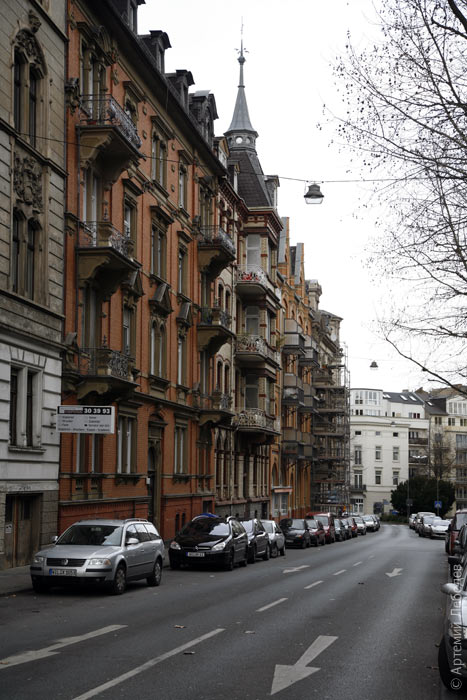 This Italian restaurant overstates the merits of Italian wines (they all taste like fizzy drinks, eww). 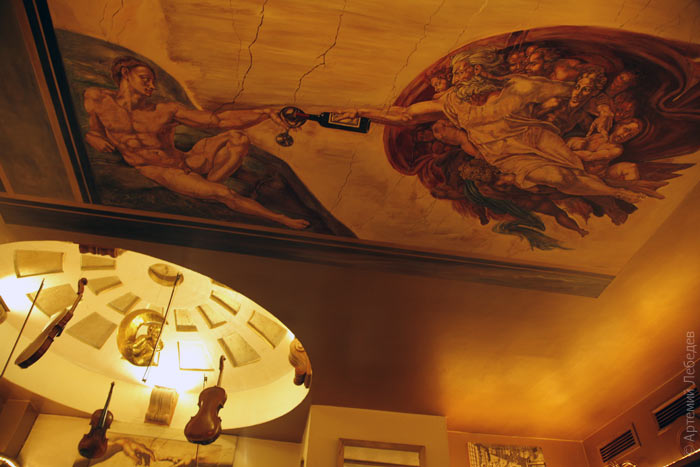 To mark its 125thth anniversary this café put old ladies in its front window. 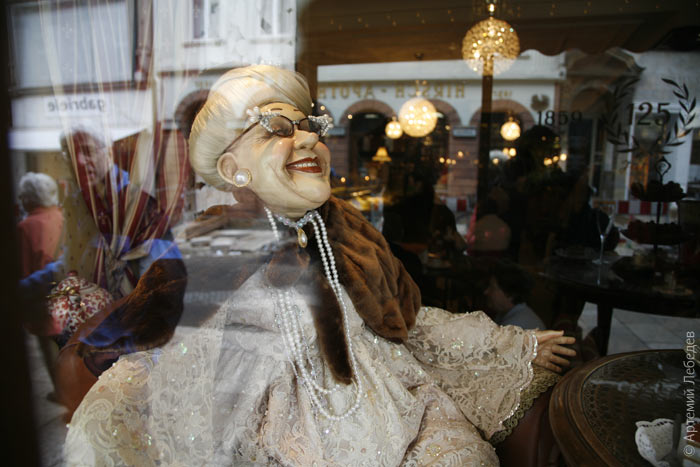 The mannequins here all are very interesting. 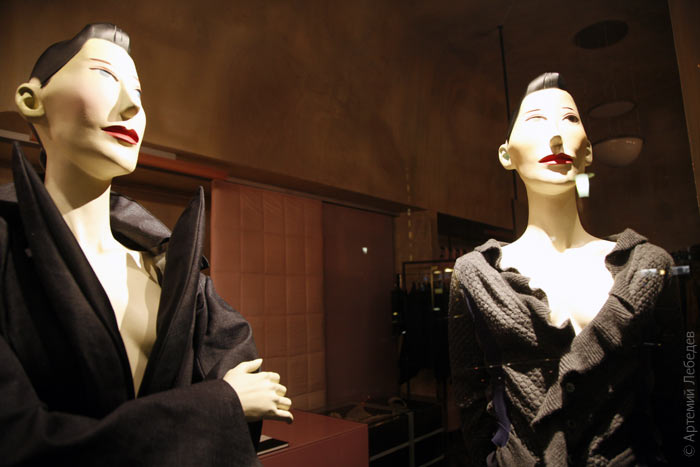 Postmen walk around with special courier trolleys. 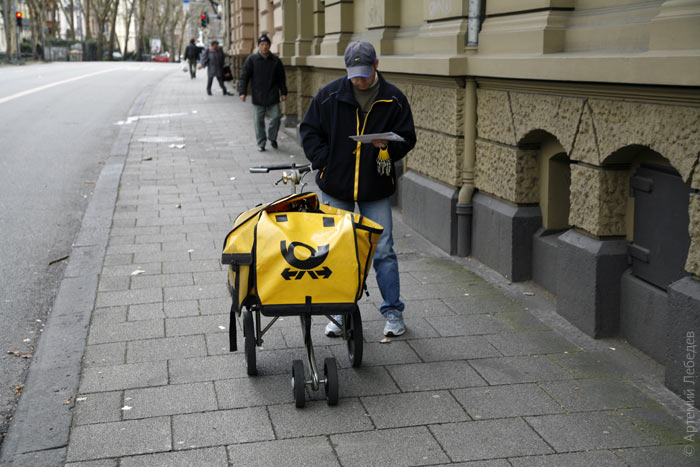 It’s clean, orderly, and calm here. Even the pigeons cross only at pedestrian crossings (and only when the green man lights up).  Schwäbisch GmündMapIt was dark already, I came here on business, and there isn’t much to photograph. They only have one kind of designer in these backwoods: top- notch. StuttgartMap
A light dinner in a city that was surprisingly lively despite the late hour (by German standards). The first time I’ve seen parking reserved for women.  MarburgMapIt’s mid-March, just the time for a light dusting of snow. 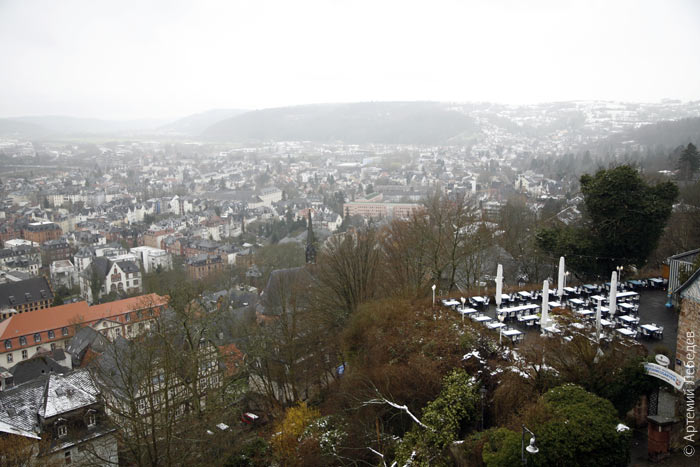 Little has changed here over the last few hundred years. 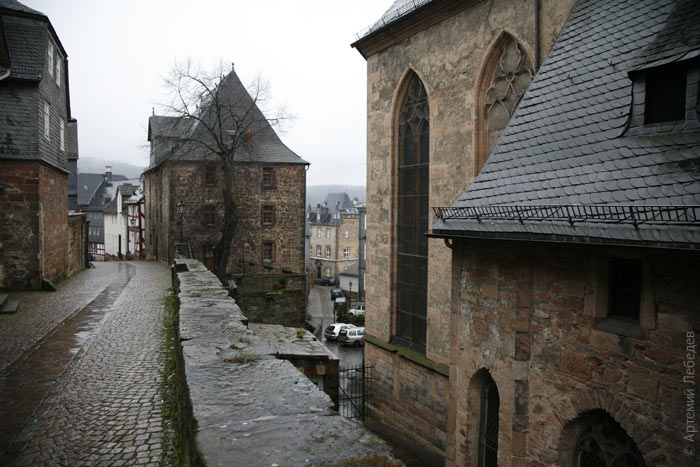 A Russian student once rented a flat in this house from a beer brewer’s widow. The student was partial to a drink, a good brawl and much philandering. At some point his wild oats caught up with him — he had to marry the beer brewer’s widow’s daughter. 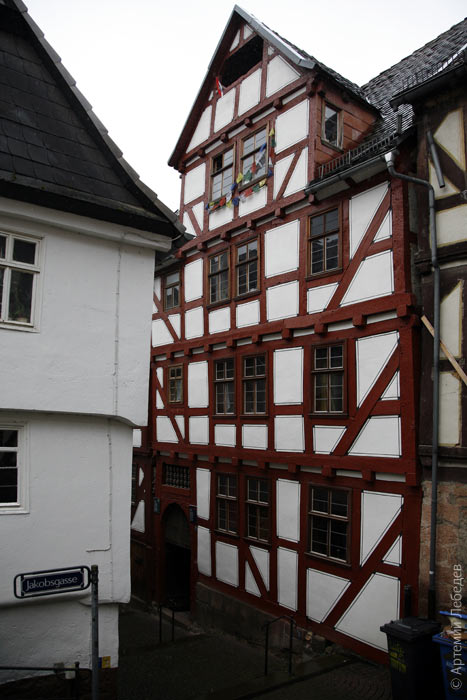 The student’s name was Misha Lomonosov (the Russian polymath, scientist and writer). It chucked it down with wet snow the whole time we were heading north. The Autobahn is particularly loathsome on such days. 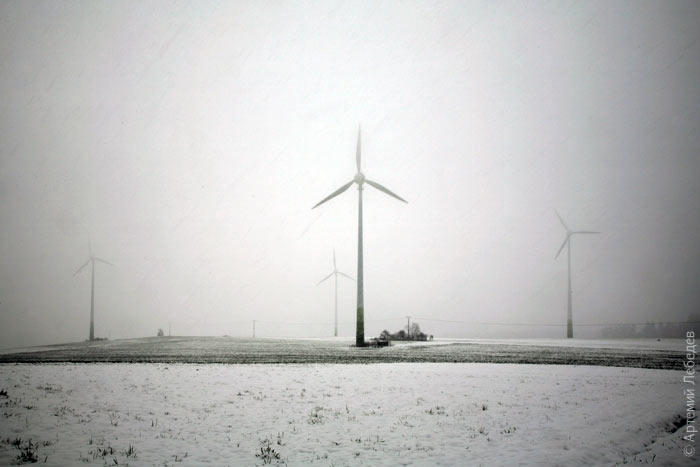 HamburgMapHere direction signs pointing to faraway destinations are lit up from the inside. 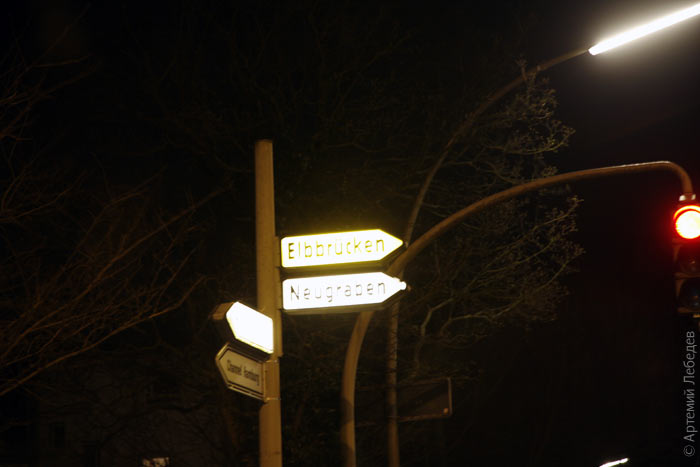 Traffic lights hang on bent lampposts. 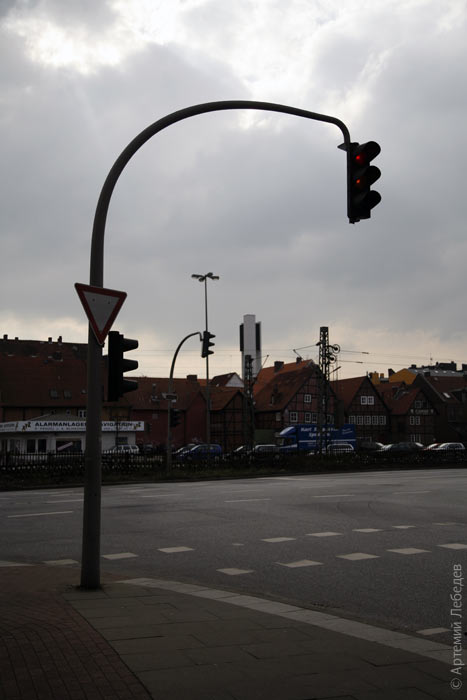 They’re staging an experiment whereby drivers are allowed to turn right on red (in places where it’s being conducted there aren’t any comments below the green arrow). 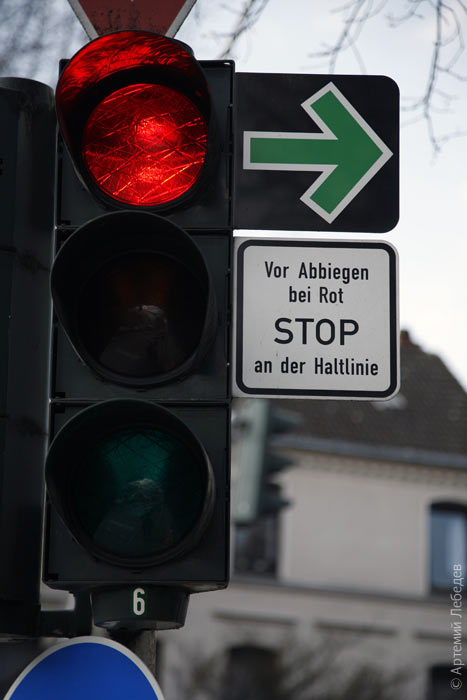 The car was towed to the pound because I’d left it in a disabled parking spot. This put a damper on my morning. I collect stickers from free car pounds in Moscow on my driver’s license (you stick them all over your car’s cracks; that way when someone tries to nick your car stereo or battery at the pound the stickers will rip). No stickers are given out here, all they do is issue a 250 euros fine. 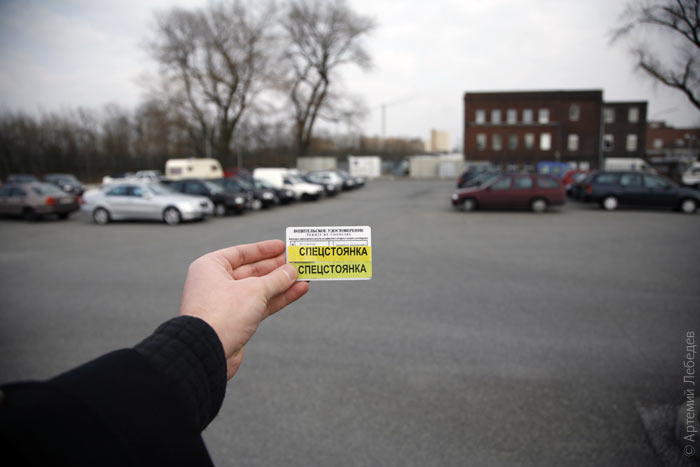 Here’s an excellent office building, converted from a grain storage facility. 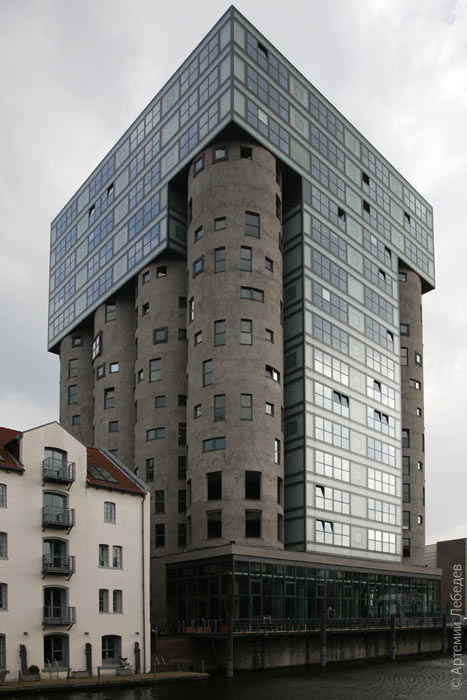 Hydrogen-powered buses run in the centre, emitting ordinary steam.  A half a kilometre long car and pedestrian tunnel runs under the Elbe. The cars go down and come up in lifts. 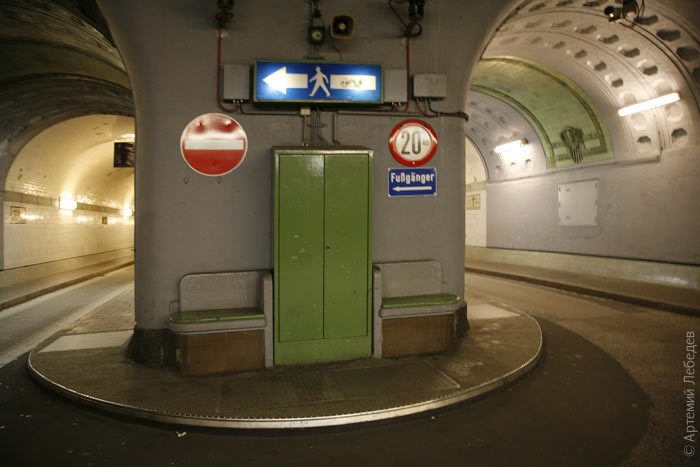 A hundred years ago architects entertained workers on their underwater journey to work with bas-reliefs of rats being given the boot. 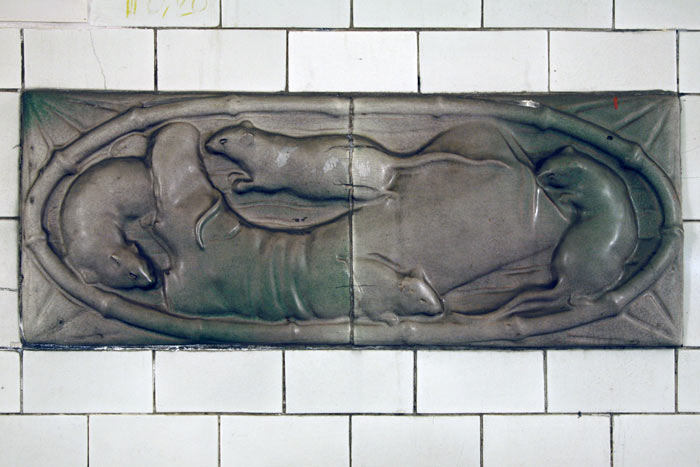 Hamburg is a great city. Port cities usually are. BerlinMapAn illustration to go with the Soviet poem “Shoes all in a row, hats all in a line: here a tram ended Octobrists’ lives” (the Little Octobrists were a Soviet youth organisation for kids aged 7-9, a stepping stone to the Young Pioneers). 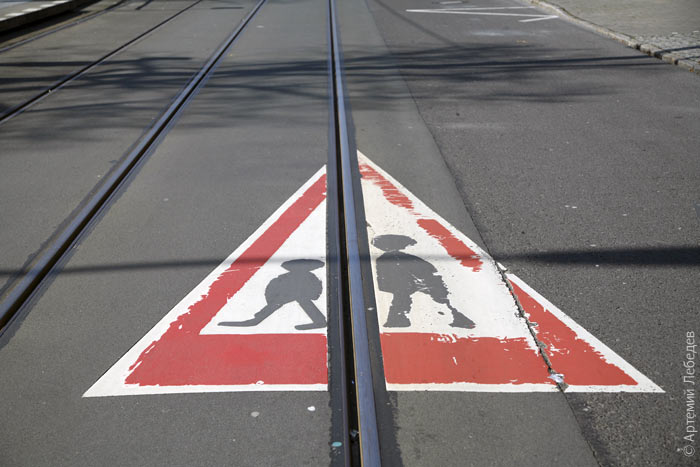 Meanwhile, this GDR green man is now lit up with LEDs. 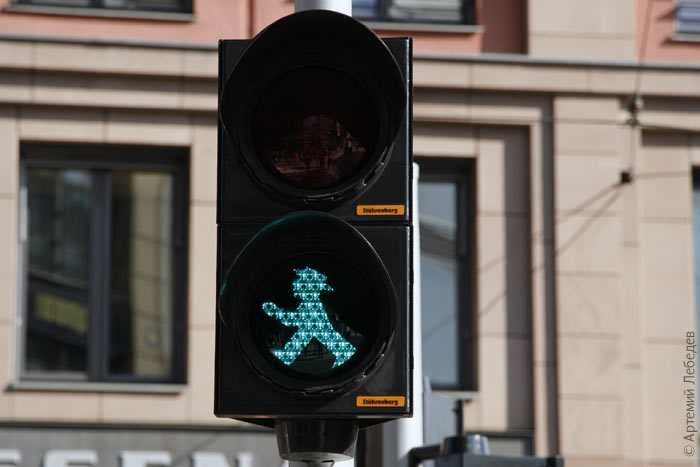 |